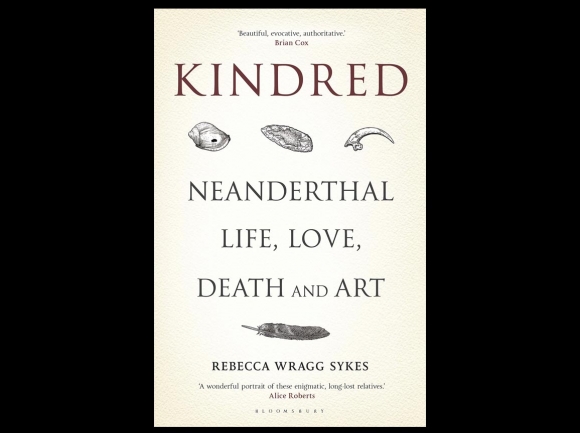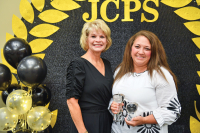Neanderthals were smarter than we thought

Toward the end of 2020, I reviewed a book here titled The Last Neanderthal by Claire Cameron. This was fiction and a novel based on actual anthropological research giving the reader a camera-eye look into the lives of the last full-blood Neanderthals to inhabit Europe. Cameron had done her homework and had written a captivating story.
Now, on the heels of that book, a new non-fiction book has been written by Dr. Rebecca Wragg Sykes, an archaeologist, author and Honorary Fellow in the School of Archaeology, Classics and Egyptology at the University of Liverpool. Kindred: Neanderthal Life, Love, Death and Art (Bloomsbury Sigma, London, 2020) is a critically acclaimed and an award-winning bestseller and scientific confirmation for the earlier novel by Claire Cameron. In Kindred — her first book — Sykes takes us on a deep dive blending 21st century cutting edge science and technology with a lyrical storytelling writing style to paint a detailed portrait of these ancient relatives of ours. For anyone interested in the history of humanity, Kindred is an exciting history of how we came to know our ancient cousins and how we’re still getting to know them, even better, today.
As someone who majored in anthropology in college and was and still is curious about the truth of human history, Dr. Sykes 400-page book kept me quite literally on the edge of my seat. From her extensive knowledge of this subject, she reveals the heretofore secrets of an extinct species who, for 350,000 years before Homo sapiens became dominant, inhabited a world larger than almost all of Eastern and Western Europe, Russia and Eurasia. Since their discovery more than 160 years ago, Neanderthals have metamorphosed from the losers of the human family tree to A-list hominins. Using her experience at the cutting edge of Palaeolithic research, the author reveals Neanderthals to be curious, clever, technologically inventive and ecologically adaptable, (including times of massive climatic upheaval) and successful survivors for more than 300,000 years.
In a section on adaptability, Sykes writes: “Dramatic changes after 150,000 years — from full interglacial to deep glacial and everything in between — were very likely part of the reason for Neanderthal’s growing flexibility, as well as specialisation. Landscapes for Neanderthals weren’t abstract spaces, but a continuous flow of lived encounters, both new and remembered.” More generally, Sykes paints a landscape portrait of Neanderthal’s relationship with the land(s) they inhabited. “They knew rock by its texture as much as its color, listened to the song of water not just for flow but temperature, and picked out tree species by the changing sound of wind soughing through their leaves. For Neanderthals, as with many indigenous cultures, the land itself may have been conceptualised not as something upon which to tread, but as someone with whom a relationship or communication was possible.”
Since hunting was more or less Neanderthal’s full-time employment, Sykes spends much time detailing, archeologically and socially, how that job looked. “To survive on the bounty of the earth means constant attention to the land. As hominins lacking the claws, teeth or great speed of other carnivores, mastering hunting would mean practice, collaboration and most particularly knowledge and planning.” Continuing on this train of thought, Sykes expands: “Neanderthal existence was a major upgrade to hominin life. They lived in more complex ways than anything before. Whatever the ecosystem, they were top-level hunters and canny foragers. Their lithic technology was more efficient and specialised and they pioneered new ways of using organic materials.”
And then she expands yet further to talk about Neanderthal’s relationship with time and space in creative ways. “One might even claim that the first revolution imbuing land with social meaning belonged to Neanderthals, not Homo sapiens.” This is a big departure from what we have been taught by the academics in the field for several generations. Sykes sums this section up by stating: “The things they collected, took apart, carried and brought back together were about more than survival. They also mark an amplification in communication, an inexhaustibly rich channel to express connections and meanings beyond the mundane. The Neanderthals were experimenting, combining substances to create different visual effects. What we would now refer to as ‘pigments,’ colors.”
Related Items
In concluding this line of thought, Sykes says: “The weight of evidence from more and more cases of pigment use and mark making is increasingly leading even skeptics to accept that Neanderthals had an aesthetic, symbolic element to their lives. Neanderthal’s artistic oeuvre, even in the creation of their clothing, is the same as that created by cultures across the globe today. It was always about more than function.”
All of the quoted lines above seem to indicate to Sykes that the Neanderthals and our ancient aesthetic heritage was a shared legacy from deep in the Homo sapien lineage. All of this has gotten me excited enough to want to do the ancestry testing to see just how much Neanderthal I have in my own family tree and how much Neanderthal DNA I have flowing through my own veins. More to the point, the message on the inside of Kindred’s dust jacket reads: “At a time when our species has never faced greater threats, we’re obsessed with what makes us special. But, much of what defines us was also in Neanderthals, and their DNA is still inside us. Planning, co-operation, altruism, craftsmanship, aesthetic sense, imagination ... perhaps even a desire for transcendence beyond mortality.”
Thomas Crowe is a regular contributor to The Smoky Mountain News and author of the multi-award-winning non-fiction nature memoir Zoro’s Field: My Life in the Appalachian Woods.









